A Compact Wideband Active Two-Dipole HF Phased Array
Abstract
:1. Introduction
2. Theoretical Model of the Antenna Array
- AF = Array factor
- θ = The radiation angle
- d =
- ΔΦ = The phase difference feed
3. Design Considerations
- I is the current at the input port of the hybrid,
- V is the output voltage of the active antenna,
- Θ is the phase angle in degrees,
- R is the real part of the antenna’s active impedance, and
- X is the imaginary part of the antenna’s active impedance.
3.1. Preliminary Testing in a Reflection-Free Environment
3.2. Final Validation Using Other Antennas
4. Concluding Remarks
Author Contributions
Funding
Institutional Review Board Statement
Informed Consent Statement
Data Availability Statement
Conflicts of Interest
References
- Economou, L.; Haralambous, H.; Pantjairos, C.; Green, P.; Gott, G.; Laycock, P.; Broms, M.; Boberg, S. Models of HF spectral occupancy over a sunspot cycle. IEE Proc. Commun. 2005, 6, 980–988. [Google Scholar] [CrossRef]
- Haralambous, H.; Papadopoulos, H. 24-h HF Spectral Occupancy Characteristics and Neural Network Modeling Over Northern Europe. IEEE Trans. Electromagn. Compat. 2009, 59, 1817–1825. [Google Scholar] [CrossRef]
- Haralambous, H.; Papadopoulos, H. 24-Hour neural network congestion models for high-frequency broadcast users. IEEE Trans. Broadcast. 2017, 55, 145–154. [Google Scholar] [CrossRef]
- Mostafa, M.G.; Tsolaki, E.; Haralambous, H. HF spectral occupancy time series models over the eastern Mediterranean region. IEEE Trans. Electromagn. Compat. 2016, 59, 240–248. [Google Scholar] [CrossRef]
- Taguchi, M.; Era, K.; Tanaka, K. Two element phased array dipole antenna. ACES J. 2007, 22, 112–116. [Google Scholar]
- Bingeman, G. Phased Array Adjustment for Ham Radio. Available online: https://ftp.unpad.ac.id/orari/library/library-sw-hw/amateur-radio/ant/phaseshift/array.htm (accessed on 31 July 2021).
- Tomas, H. 2m Phased Vertical Antenna. Issuu. 2021. Available online: https://issuu.com/jw9w2ws/docs/2meterphasedvertant (accessed on 31 July 2021).
- Straw, R. The ARRL Antenna Book; ARRL: Newington, CT, USA, 2009. [Google Scholar]
- Balanis, C. Antenna Theory; Wiley: Hoboken, NJ, USA, 2016. [Google Scholar]
- Kraus, J.; Marhefka, R.; Khan, A. Antennas and Wave Propagation; McGraw-Hill: New Delhi, India, 2002. [Google Scholar]
- Von Aulock, W. Properties of Phased Arrays. Proc. IRE 1960, 48, 1715–1727. [Google Scholar] [CrossRef]
- Constantinides, A. Collinear Arrays, 1st ed.; ARRL Antenna Compendium: Newington, CT, USA, 2002; Volume 7, pp. 37–39. [Google Scholar]
- Katagi, T.; Ohmine, H.; Miyashita, H.; Nishimoto, K. Analysis of Mutual Coupling Between Dipole Antennas Using Simultaneous Integral Equations With Exact Kernels and Finite Gap Feeds. IEEE Trans. Antennas Propag. 2016, 64, 1979–1984. [Google Scholar] [CrossRef]
- Balanis, C. Antenna Theory-Analysis and Design, 3rd ed.; Wiley: Hoboken, NJ, USA, 2005; pp. 479–481. [Google Scholar]
- Kraus, J. Antennas, 2nd ed.; Mcgraw-Hill: New York, NY, USA, 1988; pp. 424–426. [Google Scholar]
- Nxp.com. 2021. Available online: https://www.nxp.com/docs/en/data-sheet/BF245A-B-C.pdf (accessed on 30 July 2021).
- Minicircuits.com. 2021. Available online: https://www.minicircuits.com/pdfs/MAR-8A.pdf (accessed on 30 July 2021).
- Minicircuits.com. Mini-Circuits. 2021. Available online: https://www.minicircuits.com/WebStore/modelSearch.html?model=PSCQ-2-51W%2B (accessed on 30 July 2021).
- HE016 | Brochure and Datasheet. Rohde-Schwarz.com. 2021. Available online: https://www.rohde-schwarz.com/brochure-datasheet/he016/ (accessed on 30 July 2021).
- Manualslib.com. R&S EM510 Manual Pdf Download | ManualsLib. 2021. Available online: https://www.manualslib.com/manual/1106858/RAnds-Em510.html (accessed on 30 July 2021).
- Cdn.Rohde-Schwarz.com. 2021. Available online: https://cdn.rohde-schwarz.com/pws/dl_downloads/dl_common_library/dl_brochures_and_datasheets/pdf_1/ZS129x_bro_en.pdf (accessed on 30 July 2021).

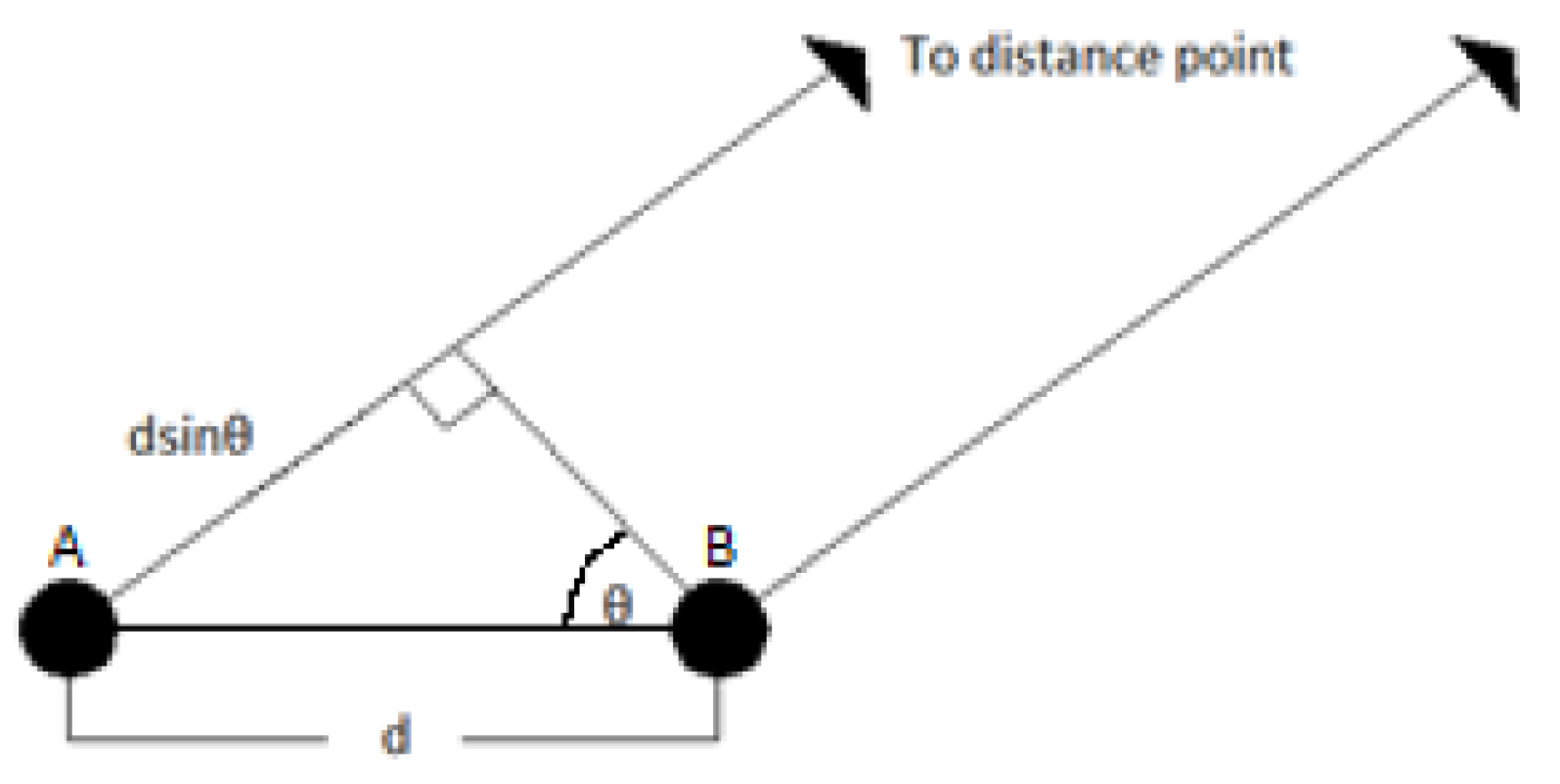
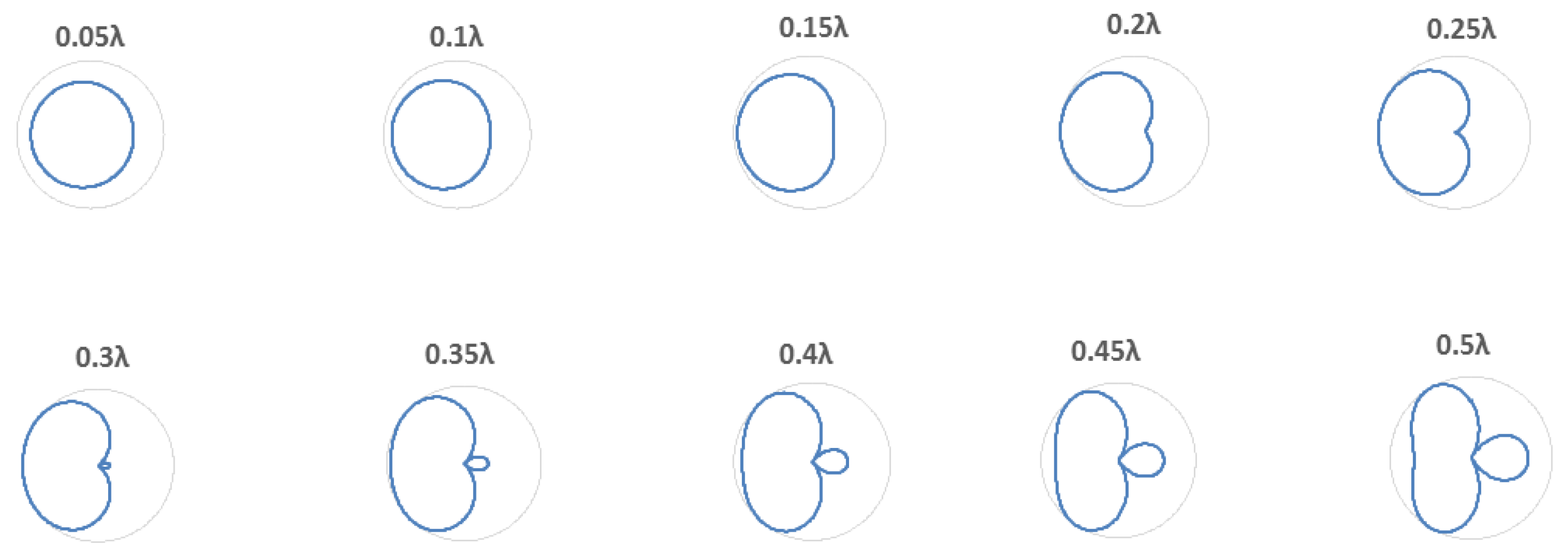
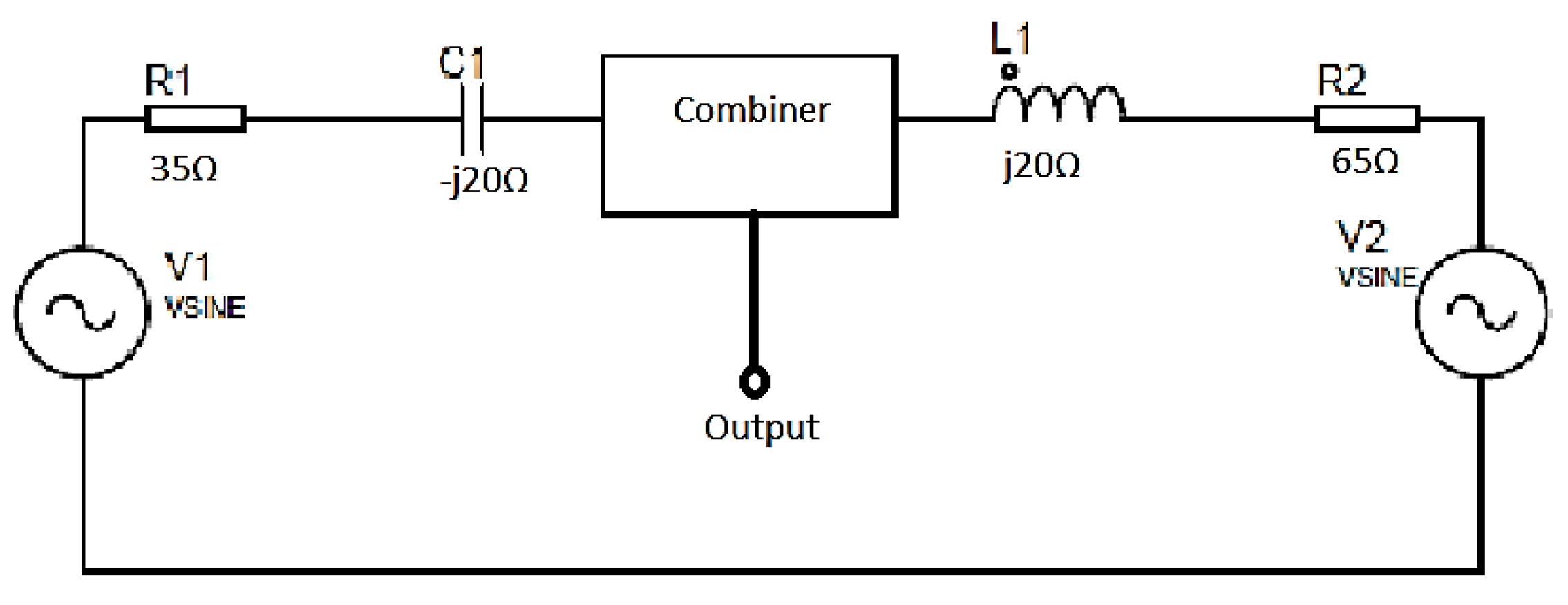
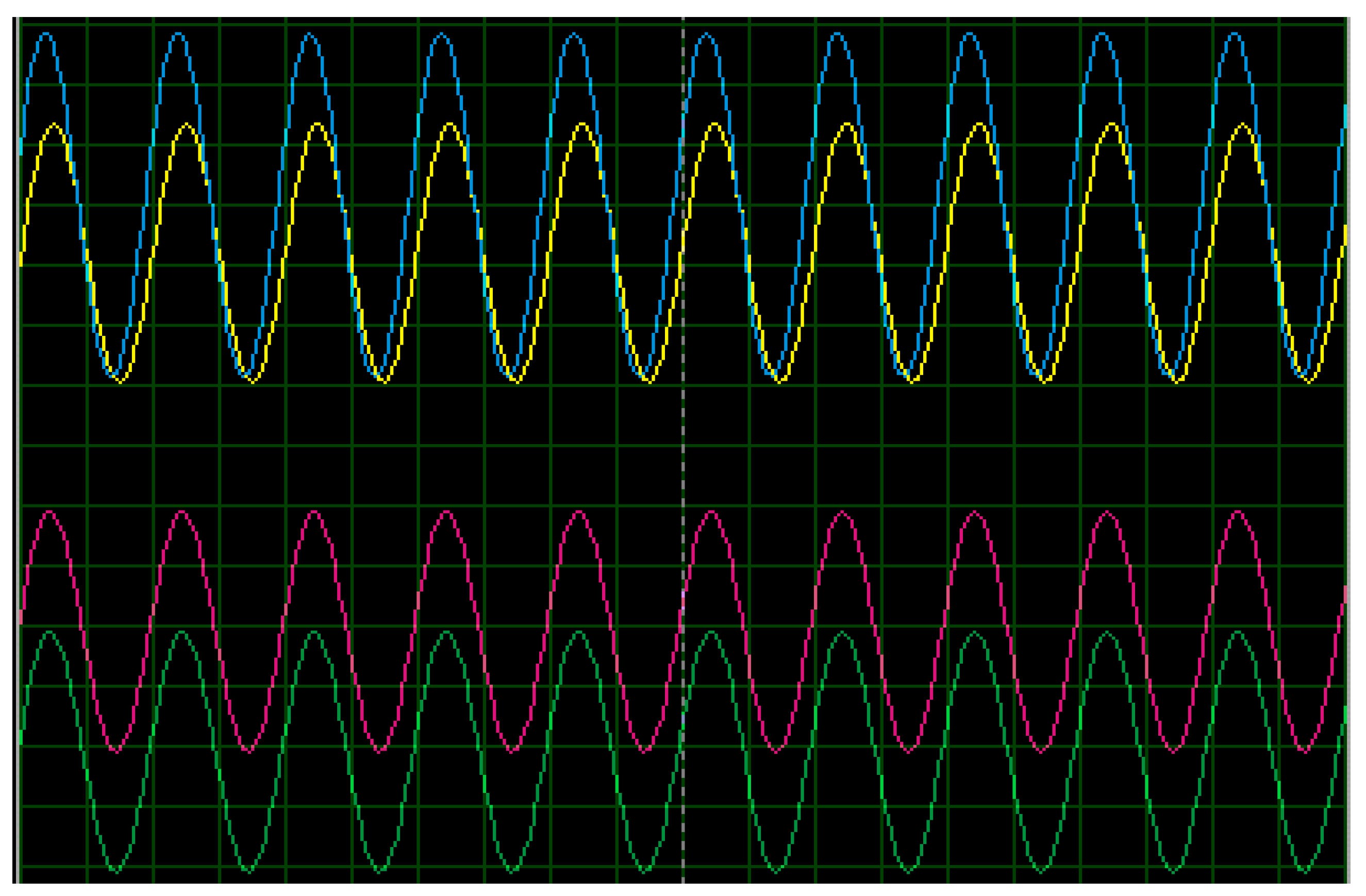
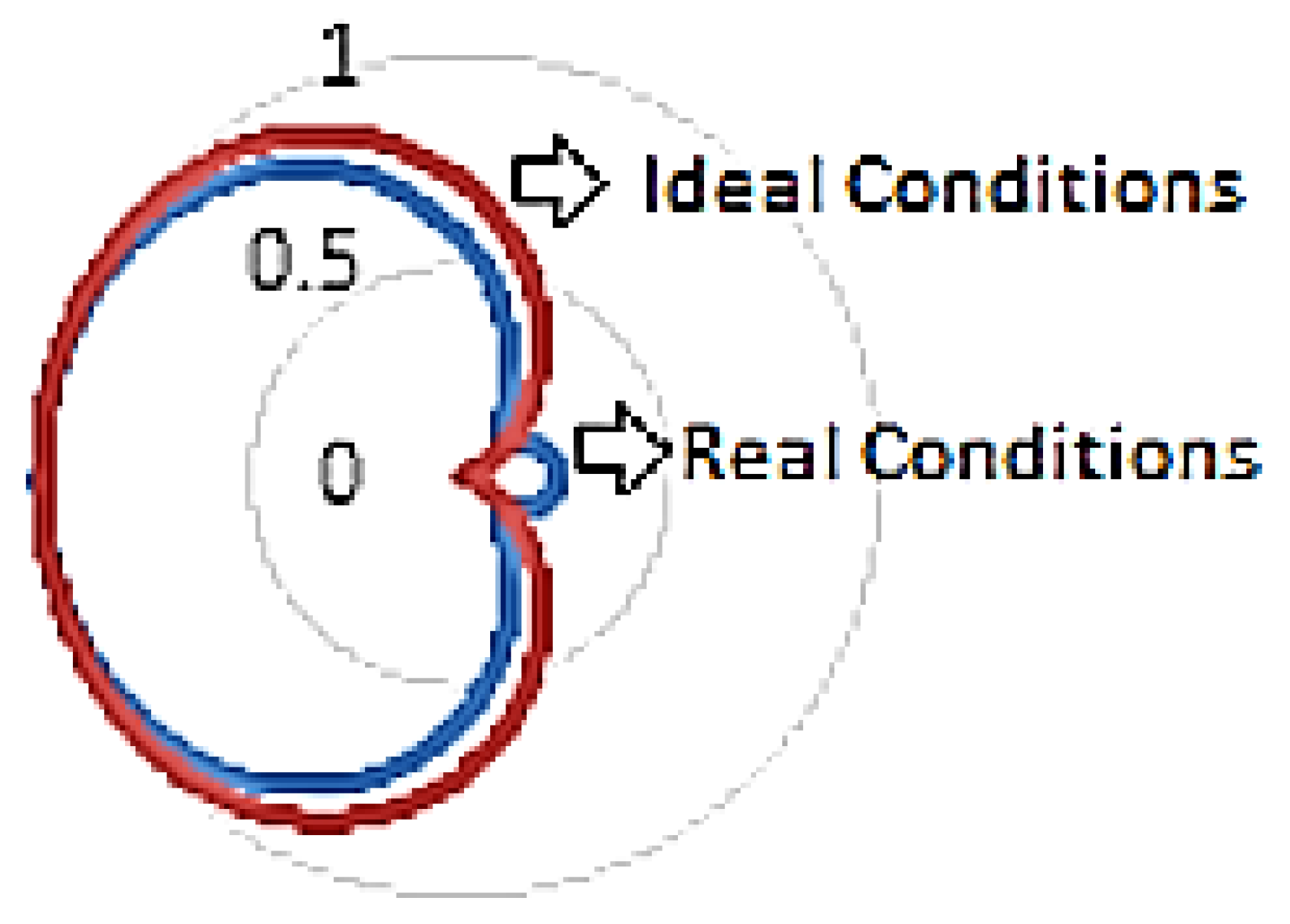
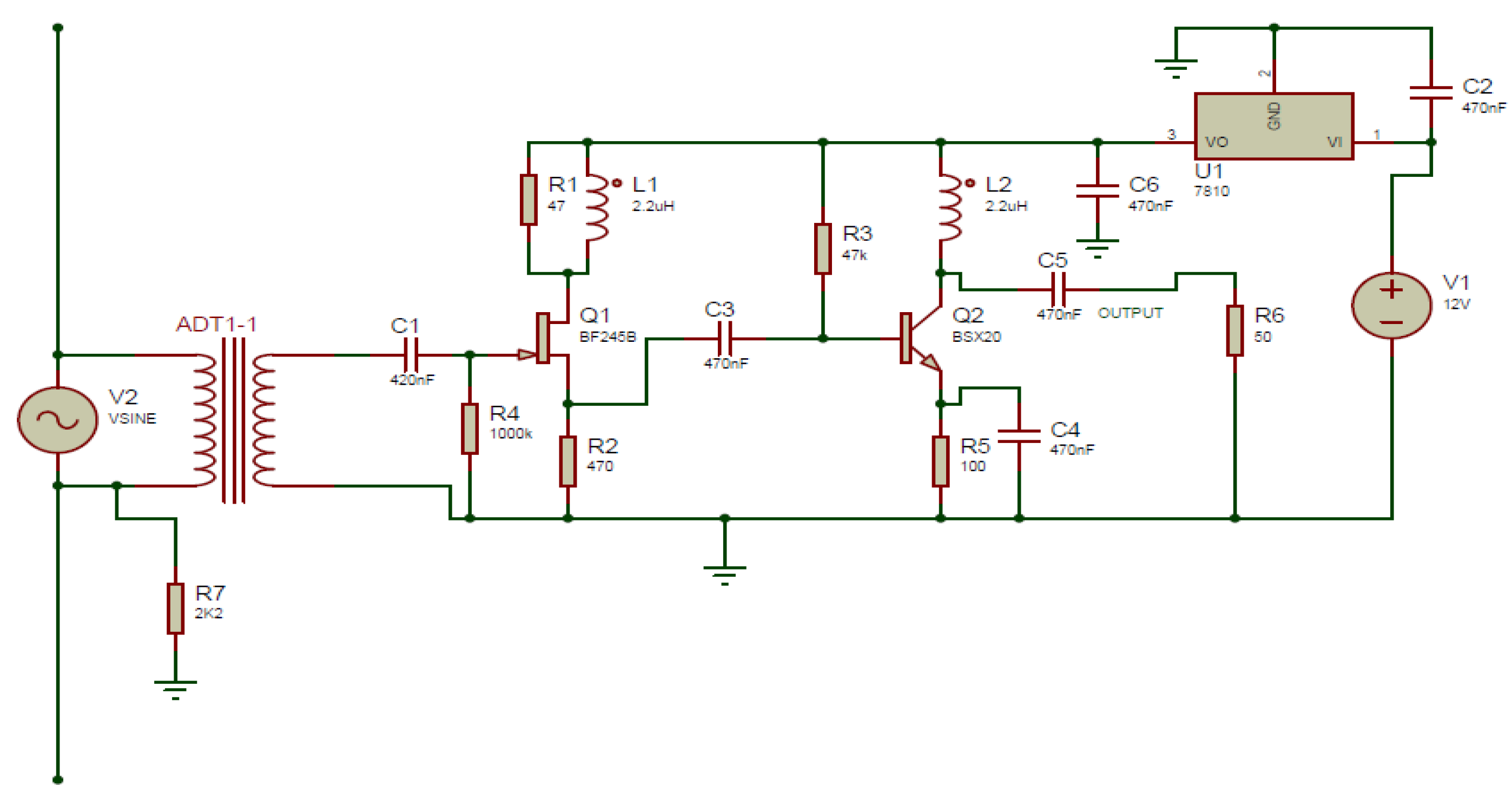
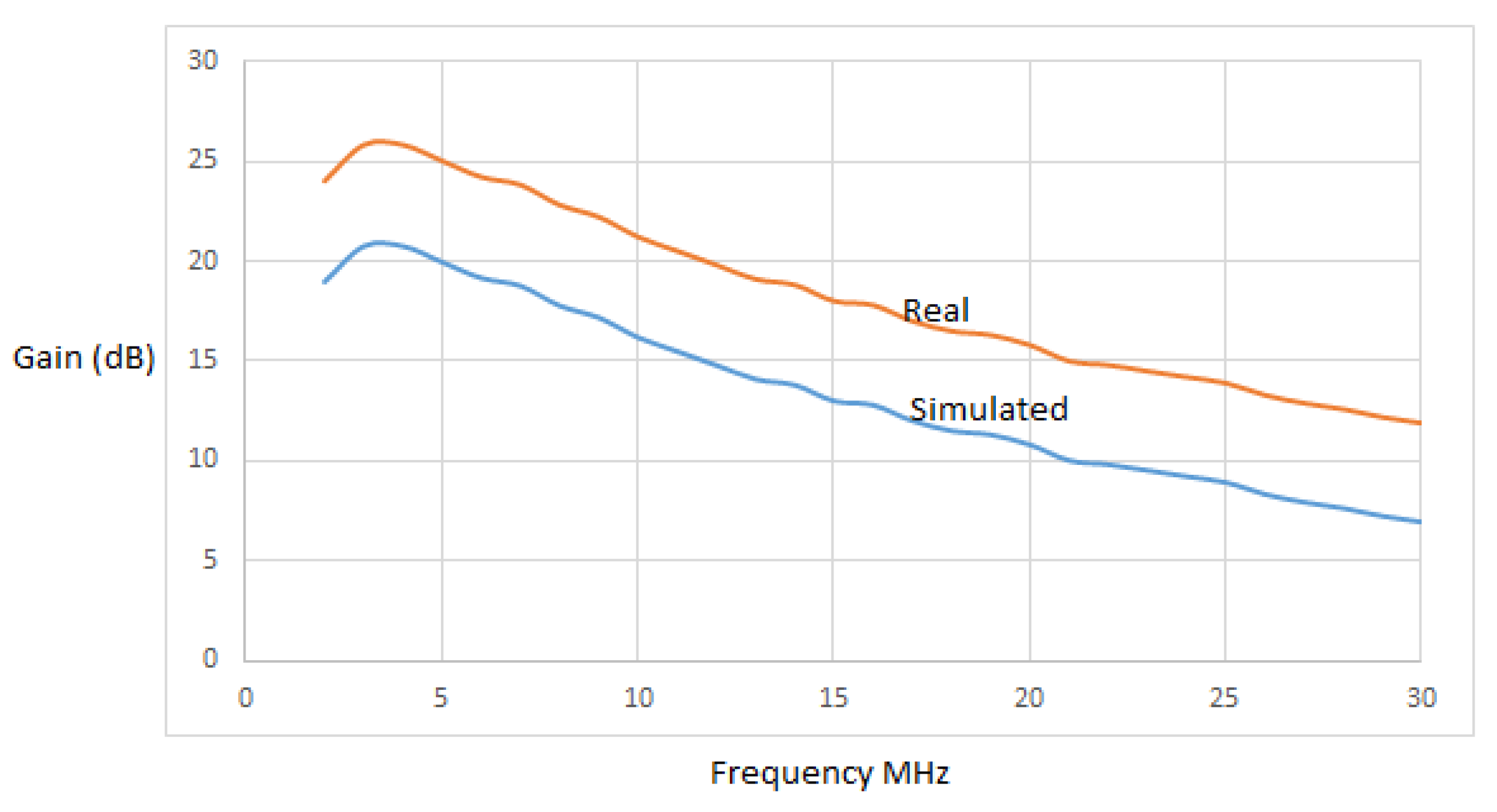


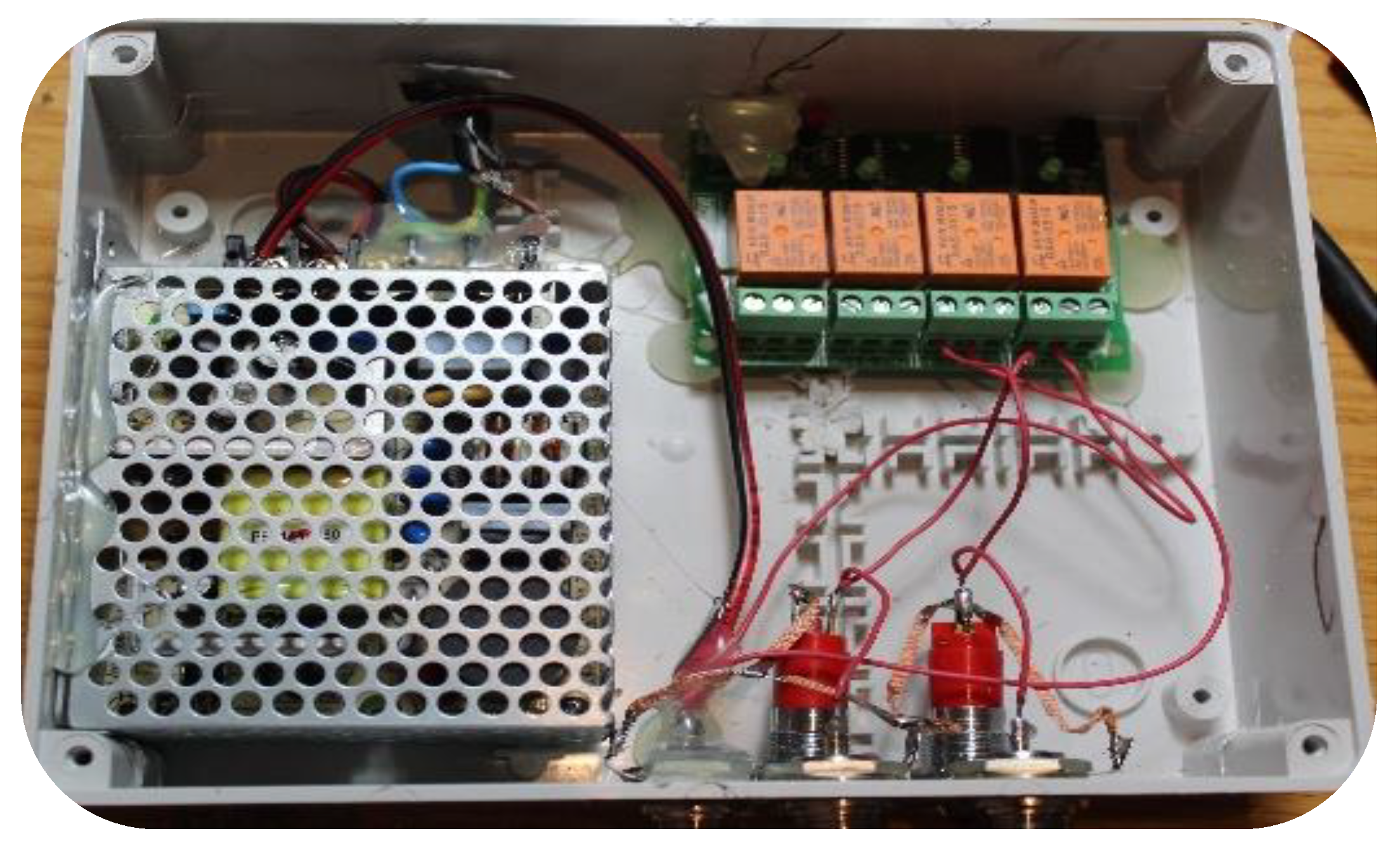
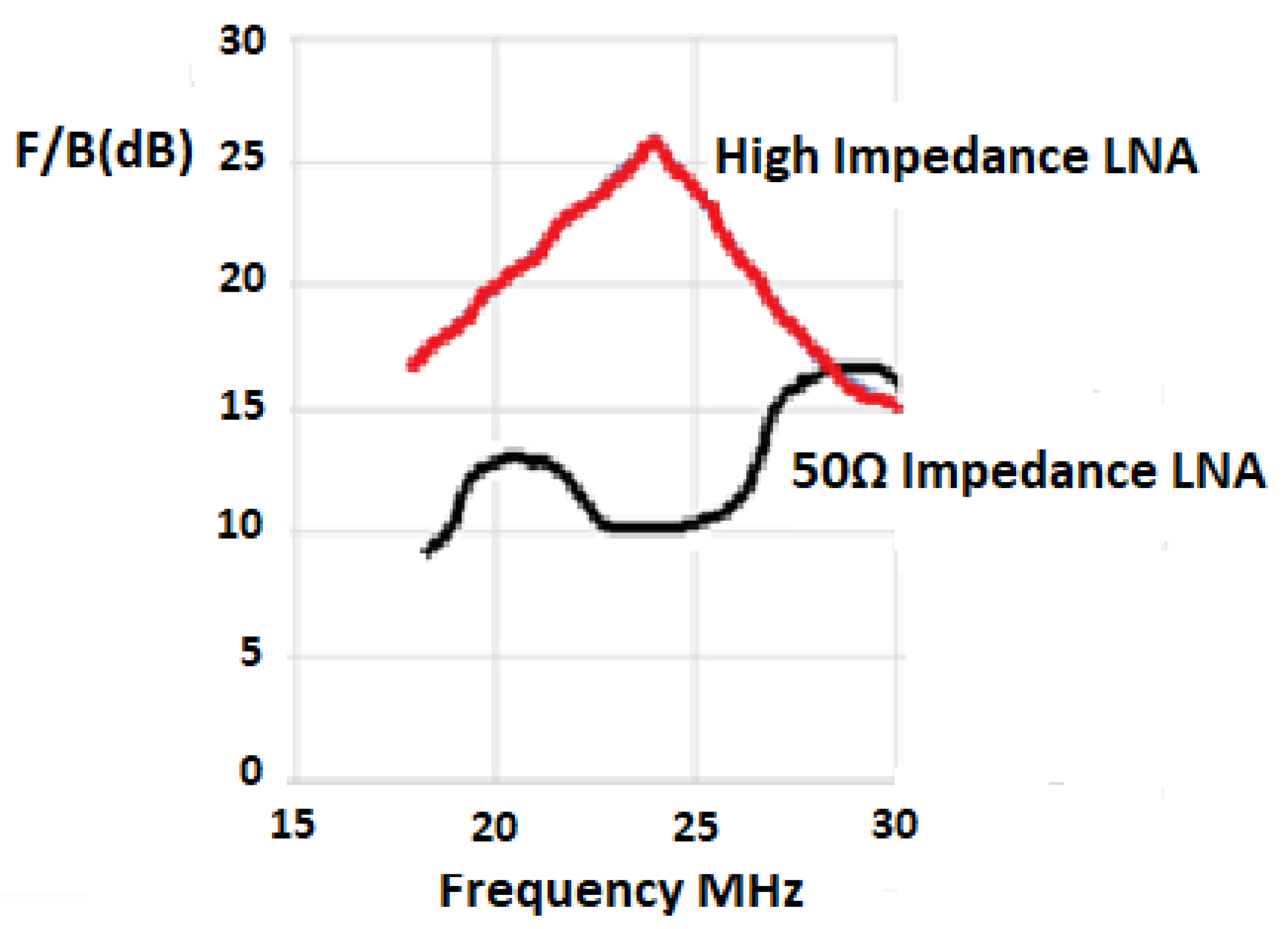

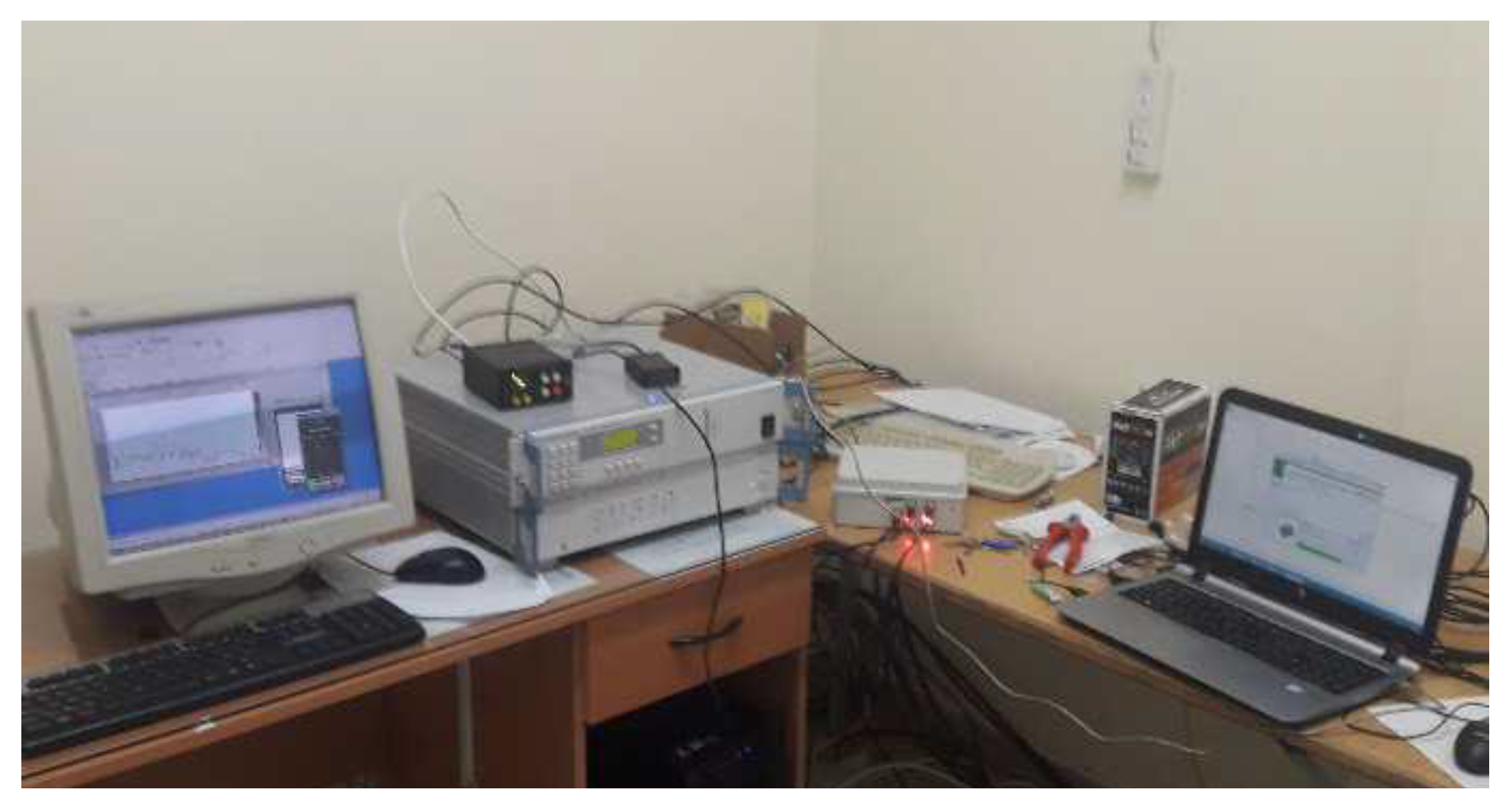
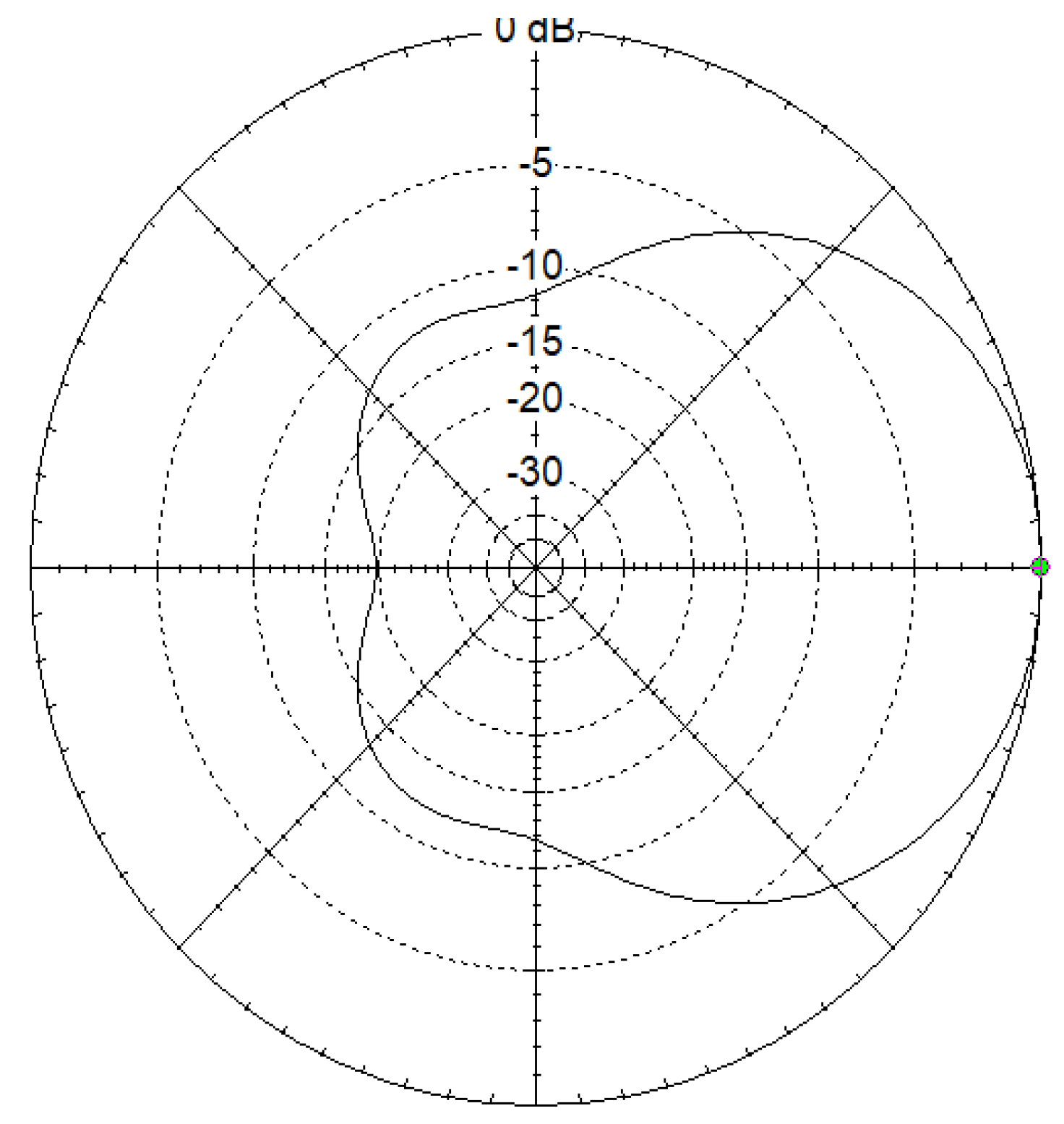

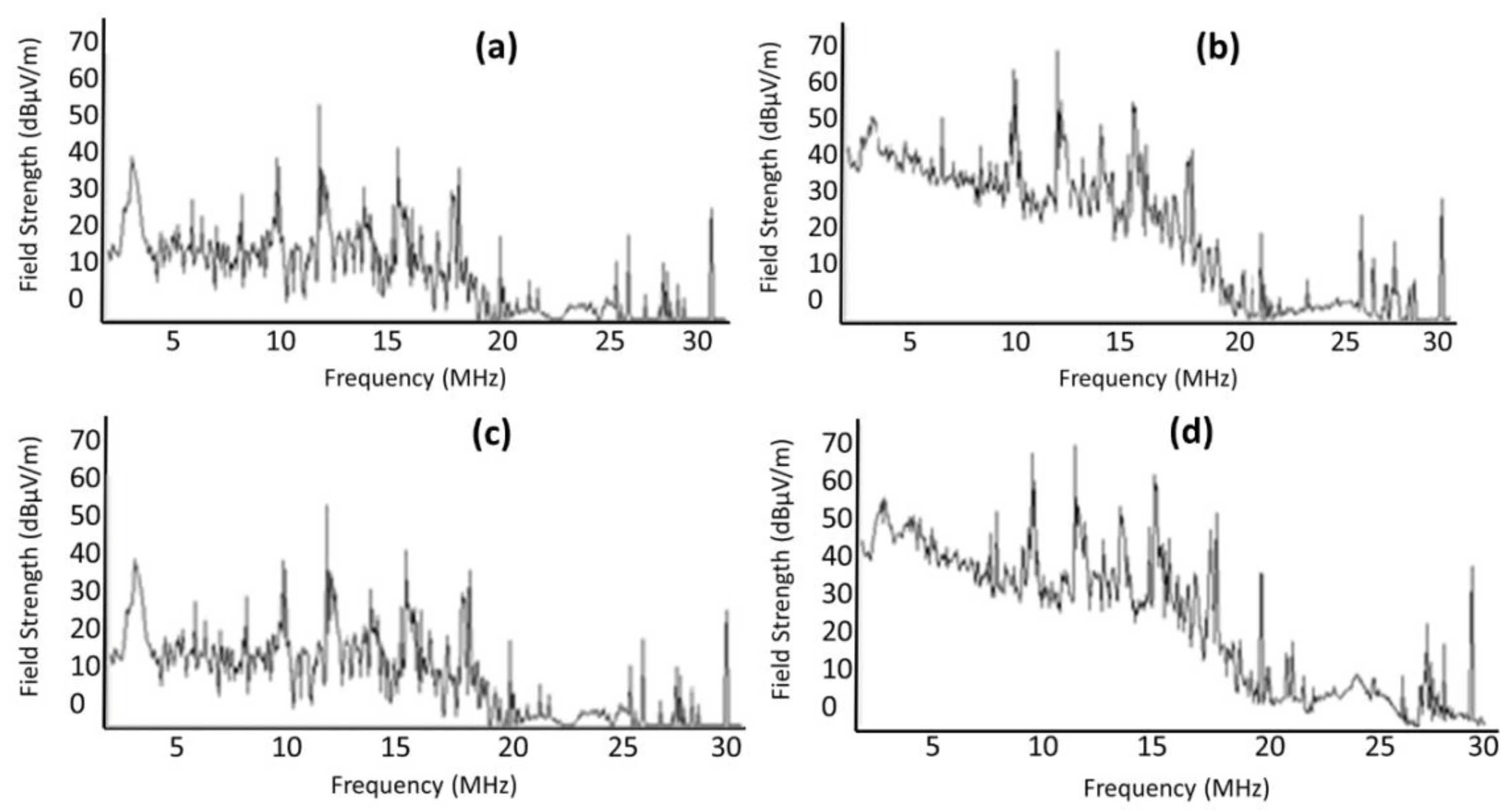
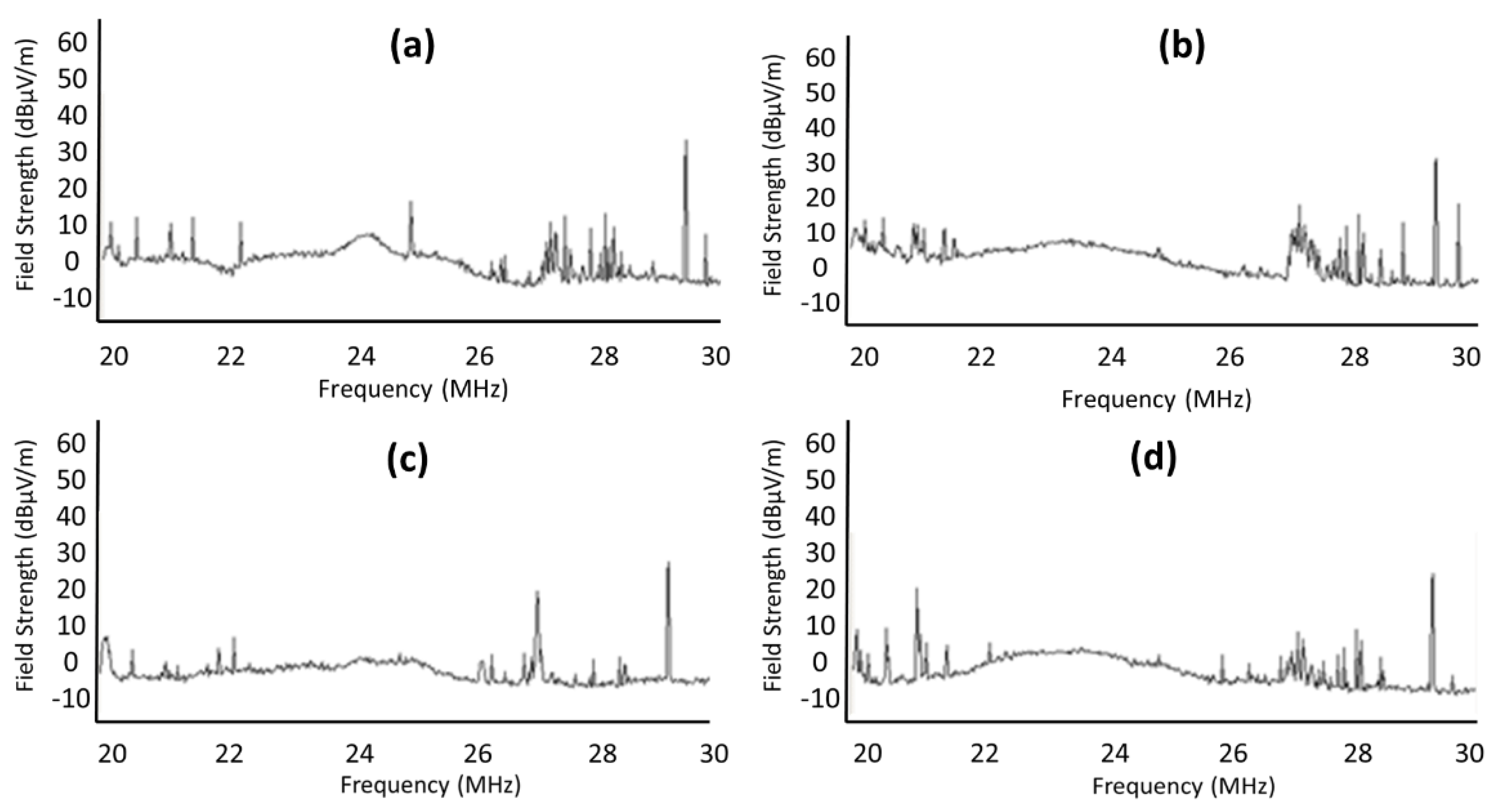
| Impedance (Ω) | Freq. (MHz) | E-Plane HPBW (Degrees) |
|---|---|---|
| 80 + j43 | 30 | 77 |
| 53 − j160 | 25 | 81 |
| 32 − j412 | 20 | 84 |
| 17 − j764 | 15 | 86 |
| 7 − j1374 | 10 | 88 |
| 1.9 − j3016 | 5 | 90 |
Publisher’s Note: MDPI stays neutral with regard to jurisdictional claims in published maps and institutional affiliations. |
© 2021 by the authors. Licensee MDPI, Basel, Switzerland. This article is an open access article distributed under the terms and conditions of the Creative Commons Attribution (CC BY) license (https://creativecommons.org/licenses/by/4.0/).
Share and Cite
Constantinides, A.; Haralambous, H. A Compact Wideband Active Two-Dipole HF Phased Array. Appl. Sci. 2021, 11, 8952. https://doi.org/10.3390/app11198952
Constantinides A, Haralambous H. A Compact Wideband Active Two-Dipole HF Phased Array. Applied Sciences. 2021; 11(19):8952. https://doi.org/10.3390/app11198952
Chicago/Turabian StyleConstantinides, Antonios, and Haris Haralambous. 2021. "A Compact Wideband Active Two-Dipole HF Phased Array" Applied Sciences 11, no. 19: 8952. https://doi.org/10.3390/app11198952
APA StyleConstantinides, A., & Haralambous, H. (2021). A Compact Wideband Active Two-Dipole HF Phased Array. Applied Sciences, 11(19), 8952. https://doi.org/10.3390/app11198952





